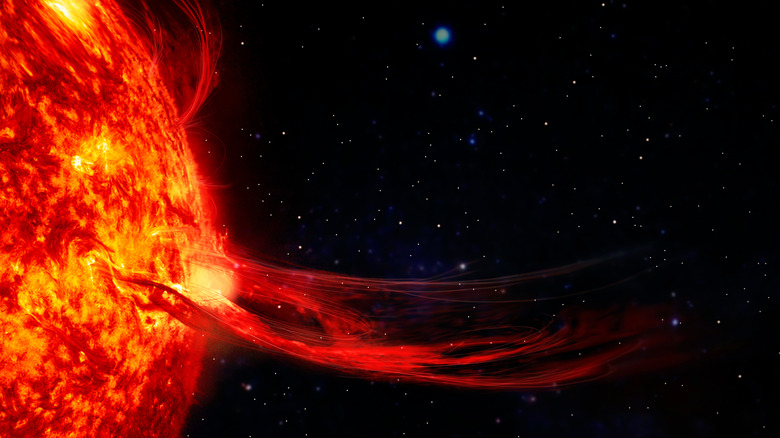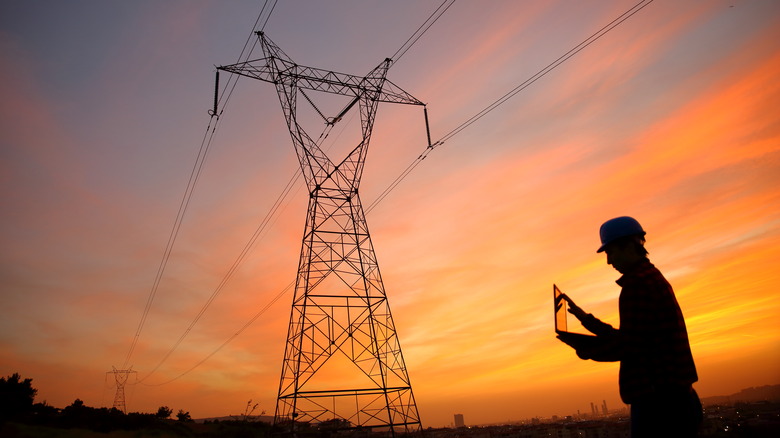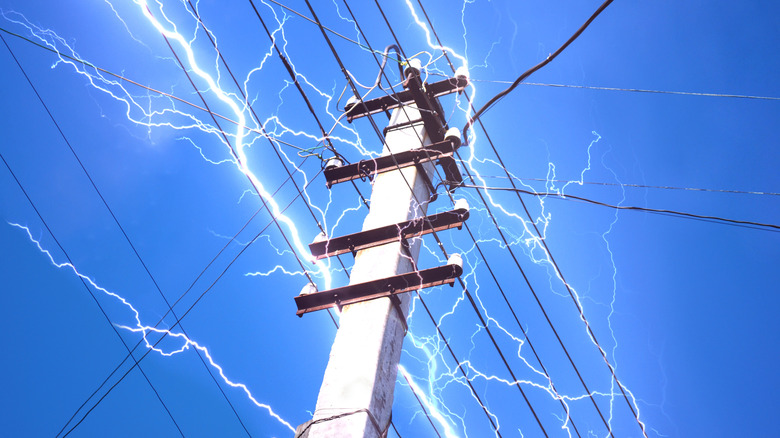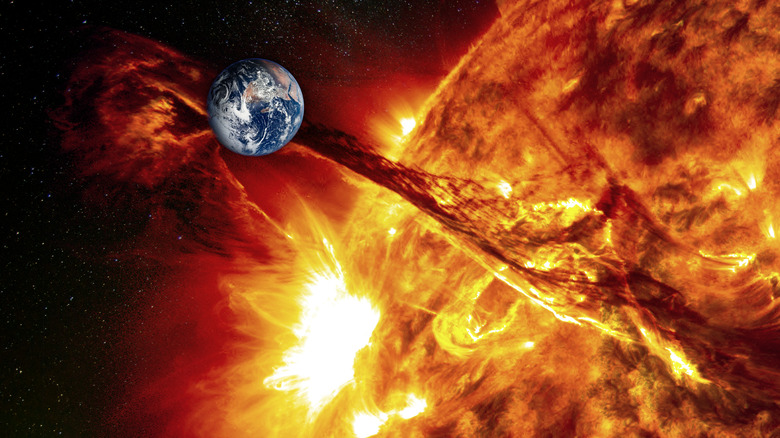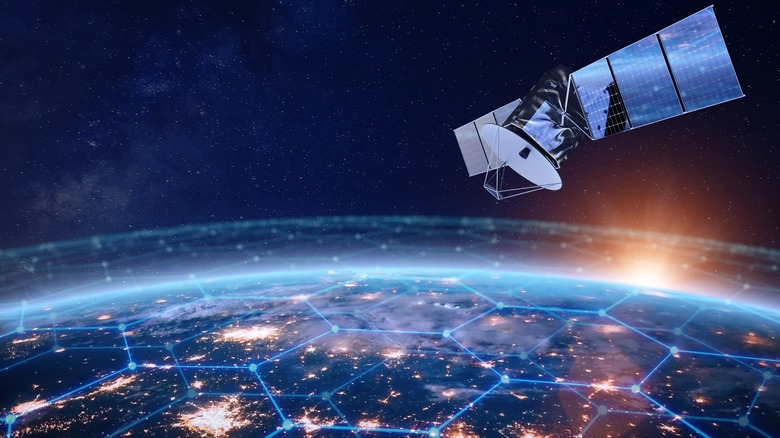Why Do Solar Storms Affect Power Grids (And Do We Know When They'll Hit Earth Next)?
Recently, social media exploded with gorgeous, awe-inspiring photos taken from around the world, depicting bright ribbons of color pulsating in the night sky. While most people have seen images of these auroras before, typically they're taken in areas closer to Earth's poles — which is why the ones that usually appear in the more populated areas are dubbed the northern lights. What was different this time around, to the delight of many who don't live closer to the Arctic Circle, is that the auroras were appearing across a much wider region of the planet — as far south as Southern California.
That's because auroras are caused by solar storms — huge bursts of energy ejected from the Sun — and the solar storm that caused these not-so-northern lights was unusually strong. Earth is constantly in the path of solar energy as it heads out into the cosmos, and when that energy is stronger than usual, from a solar storm, it can interact with our planet's magnetic field and atmosphere and cause a geomagnetic storm. This can impact the Earth in several ways, affecting power grids, satellites, communication systems, navigational equipment, and more. If you're wondering how an astronomical event originating 93 million miles away can both dazzle the night sky with beautiful colors while also potentially causing serious damage to our infrastructure, fortunately you don't need a PhD in physics to grasp the basic reasoning behind the phenomenon.
While it may seem like a far-out concept that belongs in a sci-fi movie, solar storms are actually relatively straightforward. Here's a look at what solar storms are, why they can affect power grids, and if another potentially dangerous one is set to hit Earth again soon.
How does a solar storm reach Earth?
While it may look relatively calm from our point-of-view here on Earth, our Sun is an extremely volatile ball of gas, with frequent solar storms, solar flares, and coronal mass ejections. Solar wind is the constant flow of charged protons and electrons emitted from the Sun's corona, or outer layer. These particles can travel up to 500 miles per second through space, which is why "solar wind" is an appropriate name for them. Since the Sun expels solar wind in all directions, many coronal ejections don't directly affect Earth's magnetic field and therefore geomagnetic storms occur less frequently than solar storms.
However, sometimes Earth does get caught in the path of a solar storm. When it does, the charged particles of the solar wind come into contact with the magnetic field generated by Earth's iron core — the same magnetic field that protects the planet from cosmic radiation and helps preserve life on Earth. Most solar particles, thankfully, are deflected away by the Earth's magnetic field, though some get caught up in and can travel up and down the field. When the particles collide with oxygen and nitrogen atoms in Earth's high-altitude ionosphere, it creates green, yellow, blue, red, purple, and orange lights that shimmer and change shape as they move along the magnetic field.
Since the magnetic field is strongest at the poles, that's usually where you'll see auroras. But, solar activity peaks and wanes in an 11-year cycle, with larger and more frequent solar storms occurring at the peaks. More powerful storms can overwhelm the Earth's magnetic field and cause auroras to occur further from the poles, which is why sometimes they can be seen in atypical locations.
How can a solar storm affect the power grid?
Physicists have known for quite some time that electricity and magnetic fields are two aspects of the same fundamental forces. When a solar storm causes a geomagnetic storm in Earth's magnetosphere, the induced currents that flow into the power grid can exceed 100 amperes. This excess electricity can damage — if not destroy — the fragile, internal components of cables and transformers.
Just as you don't want to plug too many appliances into the same outlet at once, a solar storm is like plugging energy straight from the Sun into a grid that may not be ready to handle it. We've seen this play out in real time, such as in 1989, when a solar storm damaged a transformer in New Jersey, tripping the grid's circuit breakers and leaving five million people without power for several hours. Since many electrical grids are connected in a complex web of underground, undersea, and above-ground cables, a single solar event can cause widespread damage.
In addition to affecting the power grid, an influx of magnetically-induced current can disrupt all sorts of other devices, including computers and satellites — and thus the internet. Not only that, but solar storms can alter the density of the Earth's atmosphere, affecting satellites' orbits and physically shifting them out of alignment, which can disrupt GPS used for navigation, communication, and other applications. Ground-to-air, shortwave and ship-to-shore radio communication are especially vulnerable, as radio frequencies can be absorbed, reflected, and misdirected by geomagnetic storms.
History shows the damage a geomagnetic storm can cause
Geomagnetic storms are measured on a scale from G1 to G5. The recent storm that caused auroras all over the U.S., Europe, and other places far from the poles was the most powerful: a G5. However, there have been other G5 events caused by solar storms that have dwarfed this most recent one in intensity. By measuring radioactive isotopes in ice core samples, scientists believe that extremely powerful geomagnetic storms may occur once every 500 years. The most recent, dubbed the Carrington Event, took place in 1859. It's named after Richard Carrington, an amateur skywatcher who witnessed a substantial coronal mass ejection of solar particles. The solar wind, which can often take days to reach Earth, hit our atmosphere just 17.6 hours later at incredible speed.
When it did, the powerful solar storm caused auroras to extend all the way to Earth's tropical regions, such as Cuba and Hawaii. This was also the first major geomagnetic storm to occur since basic electronics were invented, and humans were able to observe how they'd be affected. So much charged energy was traveling into telegraph cables, and machines that had only recently been installed, that operators were receiving electric shocks when touching them, while papers near the equipment caught fire from exploding sparks.
Astonishingly, telegraph operators in Maine reported that they could send and receive messages even with the batteries disconnected from the equipment — because it was powered solely by ambient solar energy. Other equipment couldn't handle the power surge and was damaged or destroyed. At the time, electronic communication was still in its infancy, which begs the question: what could a solar storm that powerful do to Earth's infrastructure today?
When will a solar storm hit Earth next?
Some of the biggest solar flares, such as the one that caused the Carrington Event, can release as much energy as a billion hydrogen bombs. While storms of that magnitude are estimated to occur on average every 500 years, storms with half that intensity still take place about twice a century. Currently, the sun is nearing the peak of its 11-year cycle, with the solar maximum taking place in July 2025.
The U.S. National Space Weather Prediction Center believes that there could be up to 115 sunspots during this time. Sunspots are typically where solar flares and coronal mass ejections take place. Plus, solar activity will remain high as the cycle trends downward after the peak, so we can still expect some big solar storms to cause geomagnetic storms for the next couple of years.
That means that satellite operators have to constantly tinker with shifting orbits and be on guard for more powerful flares that could disrupt their electronics, possibly even temporarily shutting them down during the peak of a storm. Fortunately, while light might only take eight minutes to travel from the Sun to the Earth, solar wind is considerably slower. Just as we had advanced notice to look up and catch the recent auroras, scientists will be able to see most geomagnetic storms coming days in advance. However, if a solar storm is as powerful as when the Carrington Event occurred, that warning window may shrink to just hours.
How can we prevent damage from a solar storm?
With our society more dependent on electricity and the internet than ever before, some people believe a severe enough explosion from the sun could end the digital age. In 2012, a solar storm much more powerful than the Carrington Event occurred — one that could have knocked out our communication and power grids. Fortunately, it just missed the Earth. At some point, though, we can expect at least some damage to occur from a powerful geomagnetic storm.
Major utilities are aware of this and are already coming up with, or implementing, ways to mitigate or prevent damage to the grid from a solar storm. This includes setting up temporary transformers in the event that existing ones are destroyed, or installing flywheels and other dampening devices that remove excess electricity from the grid. Some equipment can also be placed within Faraday cages, which can physically shield them from surges caused by EMPs and solar storms.
To prevent damage, grids can also be shut down temporarily if a storm is anticipated. If a major geomagnetic storm is forecast, you can also prepare at home as you would before any emergency that may cause a power outage, such as a hurricane or earthquake. This includes stocking up on food, water, batteries, medicine, and other supplies, as well as making sure your vehicle's gas tank is full.
Finally, we need to make sure that institutions such as the Space Weather Prediction Center continue to receive enough funding to monitor the Sun and keep an eye out for any impending solar activity. That way, when the next big solar storm occurs, we'll be ready.
